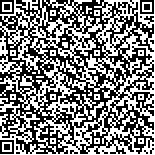下载中心
优秀审稿专家
优秀论文
相关链接
摘要

2. 国家海洋局空间海洋遥感与应用研究重点实验室, 北京 100081
面元匹配是散射计海面风场反演的重要预处理步骤。为保障海洋二号卫星散射计(HSCAT)业务化海面风场反演,提出了一种可业务化运行的HSCAT面元匹配算法。HSCAT面元匹配算法包括地面网格划分和后向散射系数观测结果重采样两个关键部分。为简化计算,HSCAT采用以星下点轨迹为中心,以顺轨向及交轨向为坐标轴,分辨率为25 km×25 km的网格划分方式。重采样利用卫星星下点经纬度数据,对每个后向散射系数观测结果,以后向散射系数与各星下点球面距离的最小值为依据进行交轨向重采样,并以取得距离最小值所对应的星下点与该轨数据星下点起始位置的距离为依据进行顺轨向重采样,实现对后向散射系数观测结果的面元匹配。实验和对比结果表明,提出的面元匹配算法可对后向散射系数进行有效的重采样,风矢量面元的位置分布均匀,每个风矢量面元均有足够数量的独立观测后向散射系数,可在全球范围内满足高质量海面风场反演的要求。
Regrouping refers to the process of resampling the backscattering coefficients that are stored according to the observation sequence and the corresponding parameters of wind vector cell observation geometry. Regrouping is important in scatterometer data processing because it directly affects the final measurement accuracy. In August 2011, China launched its first operational satellite-borne scatterometer HSCAT. Thus, designing a suitable regrouping algorithm for accurately retrieving wind speed and direction data from HACAT observations is necessary. On the basis of the regrouping method for QuikSCAT and Shenzhou-4 multi-mode microwave remote sensing scatterometer, the present work has designed a business operational regrouping algorithm for HSCAT in accordance with its observation characteristics.
This study offers a re-designed regrouping algorithm that includes two critical steps: (1) the generation of a ground grid and (2) the resampling of observation results. To simplify the resampling process, HSCAT adopted a convenient grid model along the sub-track swath, which centered on the nadir track, with a coordinate system specifying the location of a given point in terms of “longitude” parallel to the nadir track and “latitude” perpendicular to the nadir track. The origin of the nadir track grid is at the southernmost orbit latitude (rev boundary), and the resolution is set to 25 km×25 km. After the sub-track grid was set, for each “egg” this study searched the nadir track point with the shortest spherical distance to the observed backscattering coefficient, and this shortest distance was used to calculate the cross-track indices (column_number) in the sub-track grid for the “egg”. Then, the distance between this nadir point and the nadir point at the southernmost orbit latitude (rev boundary) was calculated. Moreover, this distance was used to calculate the along-track indices (column_number)) in the sub-track grid for the “egg”. To improve calculation efficiency, we used coarse and fine search strategies when searching for the minimum spherical distance between the backscattering coefficient and the nadir track point.
To verify the effectiveness of the proposed regrouping algorithm, we first analyzed the location distribution of wind vector cells and the spatial distribution of the total independent observation number of each wind vector cell in high-latitude and low-latitude areas. Results show that the wind vector cells are uniformly distributed, and a sufficient number of independently observed backscattering coefficients are included in each cell, which can satisfy the requirements of wind vector retrieval. Meanwhile, comparison of NDBC buoy wind and the retrieved wind shows that the standard deviations of wind speed and wind direction are 1.7 m s-1 and 23.4° for the retrieved wind, respectively, indicating that the proposed regrouping algorithm can meet the requirements for high-quality sea surface wind field retrieval.
This article proposes a business operational regrouping method for HSCAT. To simplify the resampling process, this method adopts the sub-track grid in along-track and cross-track directions with grid cells having approximately 25 km resolution. Meanwhile, the shortest spherical distance between each independent backscattering coefficient measurement (“egg”) and the nadir track point was used to calculate the cross-track indices (column_number) in the sub-track grid for each “egg” and the distance between the nadir point with “shortest spherical distance” and the nadir point at the southernmost orbit latitude (rev boundary) was used to calculate the along-track indices (column_number) in the sub-track grid for the “egg” In this way, the grid cells corresponding to the observed backscattering coefficients in the along-track/cross-track coordinate network were determined, and the resampling was completed. We used coarse and fine search strategies when searching for the minimum spherical distance between the backscattering coefficient and the nadir track point, effectively improving calculation efficiency. According to the post-regrouping location distribution of wind vector cells and the spatial distribution of the observation number of each wind vector cell, the proposed regrouping algorithm can achieve effective resampling of backscattering coefficient. After resampling, the acquired wind vector cells are uniformly distributed, and a sufficient number of independently observed backscattering coefficients are included in each wind vector cell. These results indicate that the backscattering coefficients can be resampled effectively.

